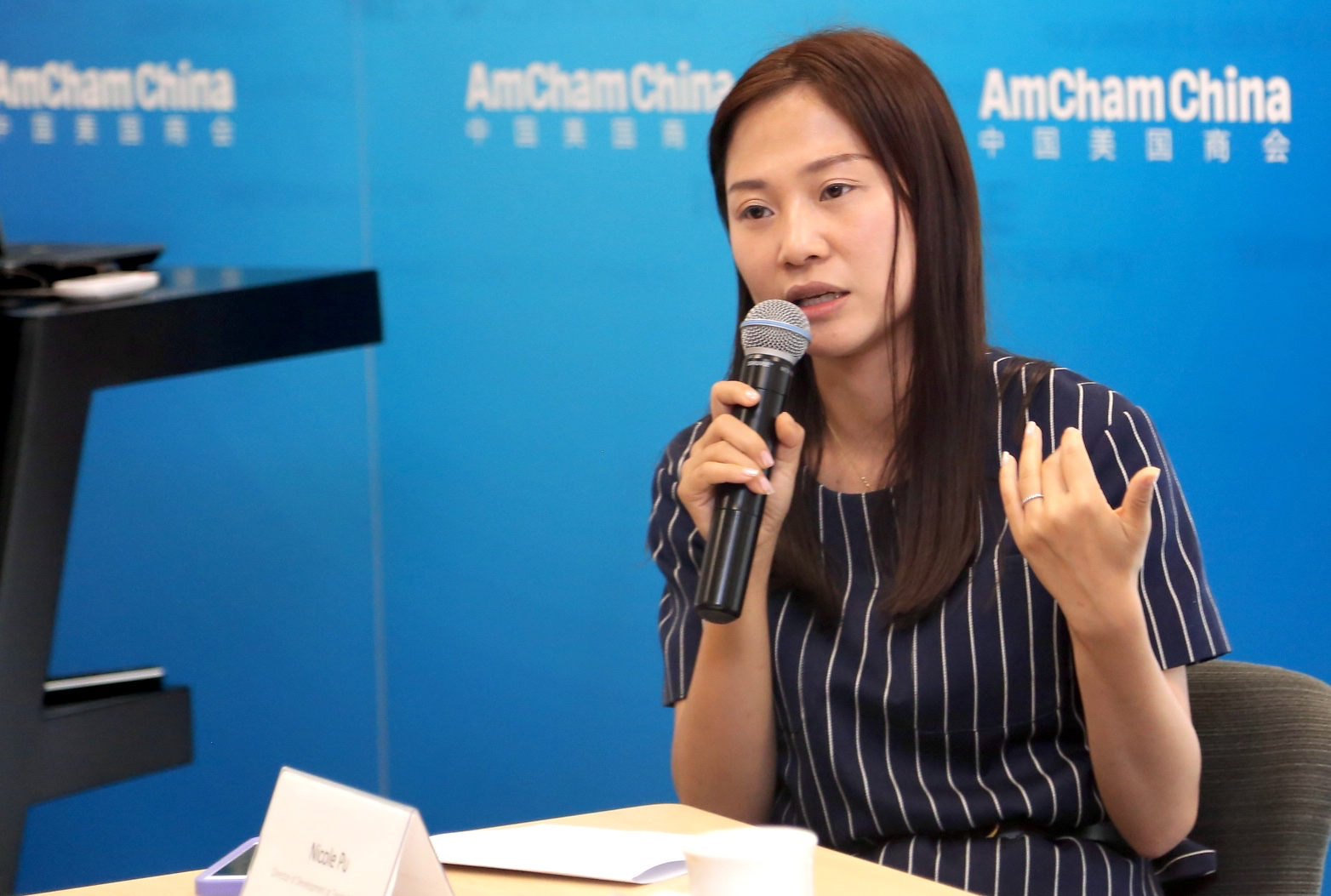As part of an AmCham China series on innovation in education, Nicole Pu, Director of Development at Teach For China, discussed the current state of education inequality in China during the Oct. 14 event, “Innovations in China's Education Landscape.” The panel included speakers from both foreign and Chinese nonprofits and social enterprises, all working to help the country’s least privileged children gain access to good education. The difference between opportunities for urban and rural youth can be staggering: 80 percent of students in urban areas of China go to college. In underserved rural areas, that figure plummets to 5 percent.
Since its founding in 2008, Teach For China has expanded from a small-scale operation to more than 80 staff members and 350 fellows. These fellows, recruited for both leadership skills and a dedication to volunteerism, come from top foreign and Chinese universities and teach for two years. Testament to the organization's impact thus far, one of the other panelists at the event, Andrew Shirman, CEO of Education in Sight, was himself a Teach For China alumnus before founding his own social enterprise devoted to education in rural China. Pu took a moment before the event to speak with Business Now about Teach For China’s current expansion to new provinces and the increasing interest in philanthropy in China.
In 2009 we sent our first 20 fellows to one region in Dali in Yunnan province. Now in our seventh year sending fellows out, we’re in 11 regions and have staff members located in Beijing, Yunnan and Guangdong provinces. The local staff provides ongoing support to our fellows, new schools and education bureaus.
Also, our model has expanded. Teach For China not only sends fellows into schools; now we’re training local teachers and looking beyond the fellow model into what else we can do to create long-term impact.
In the short-term, Teach For China places recent college graduates in under-resourced Chinese classrooms to serve as teachers for two years, but we’re really focusing now more on our long-term impact, which is making sure that all the fellows go on and continue to be committed to solving China’s education inequality in the long run. So we are really focusing on helping our alumni launch into impactful careers in education and nonprofit work here in China. That’s always been something we really focus on, but we’re putting more resources into that recently because it’s really a challenge.
We’ve really shifted the donor focus toward local donors (from China) in the past few years. There is a huge gap between education in tier-one cities and in some remote areas of China, and we always have the problem of resource inequality regarding education. Education is still a big problem that needs to be solved, not only by government support, but also by supplementary services. We’ve built up a very strong relationship with the central government and local governments, and then we have aligned with their policy direction very well for the past seven years, and that’s why we have a solid basis to run here. That’s a very important piece of information for local donors.
I think local donors are very interested in supporting us for three reasons: We are one of the most professional NGOs in the education area in China right now; they are looking for organizations who have professionally done this sort of program for a period of time; and our built-up internal capability to shift our focus to building relationships with local donors. We are more familiar with the Chinese culture and have extensive experience.


